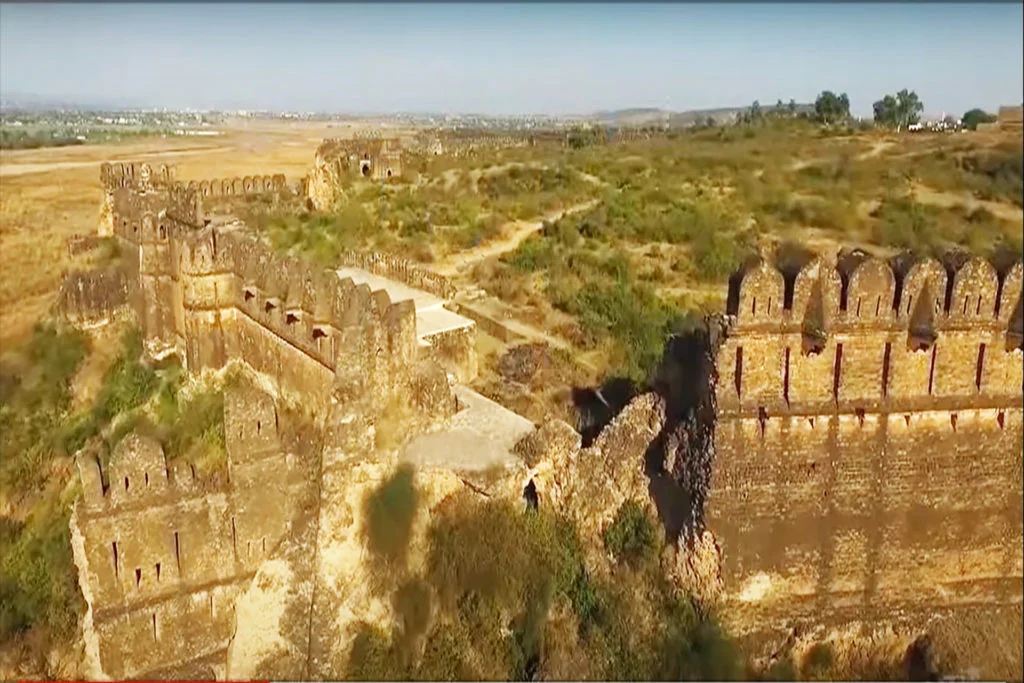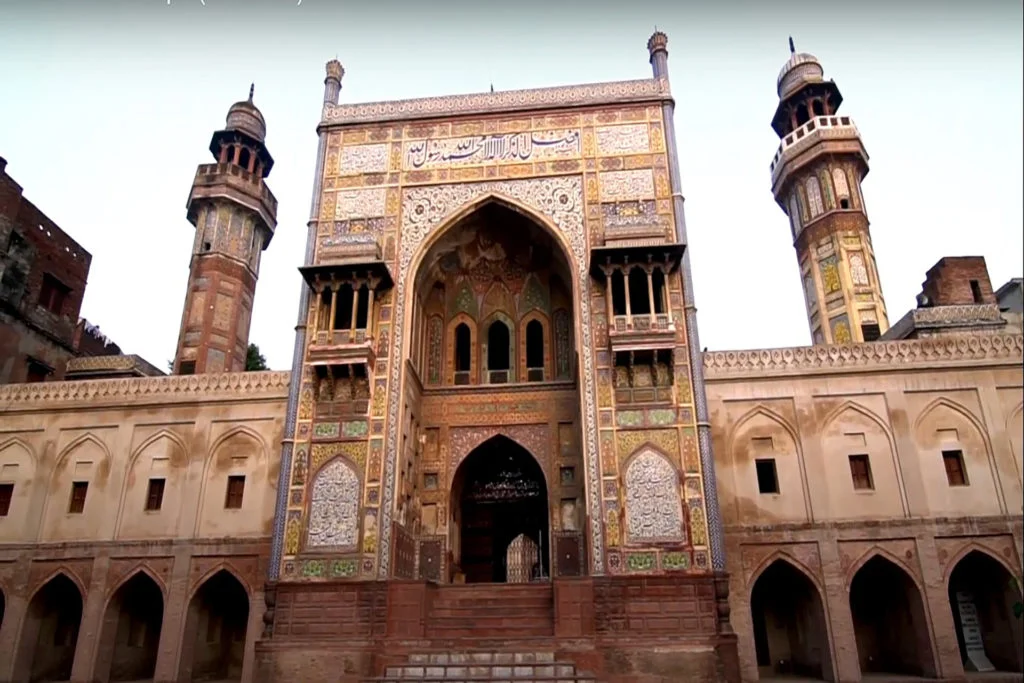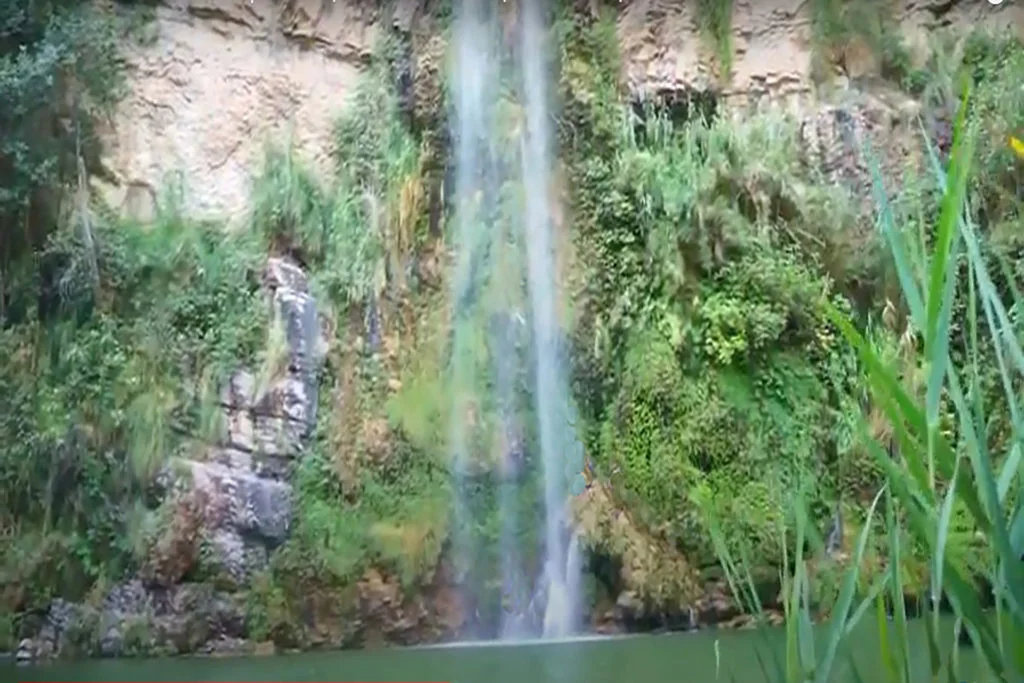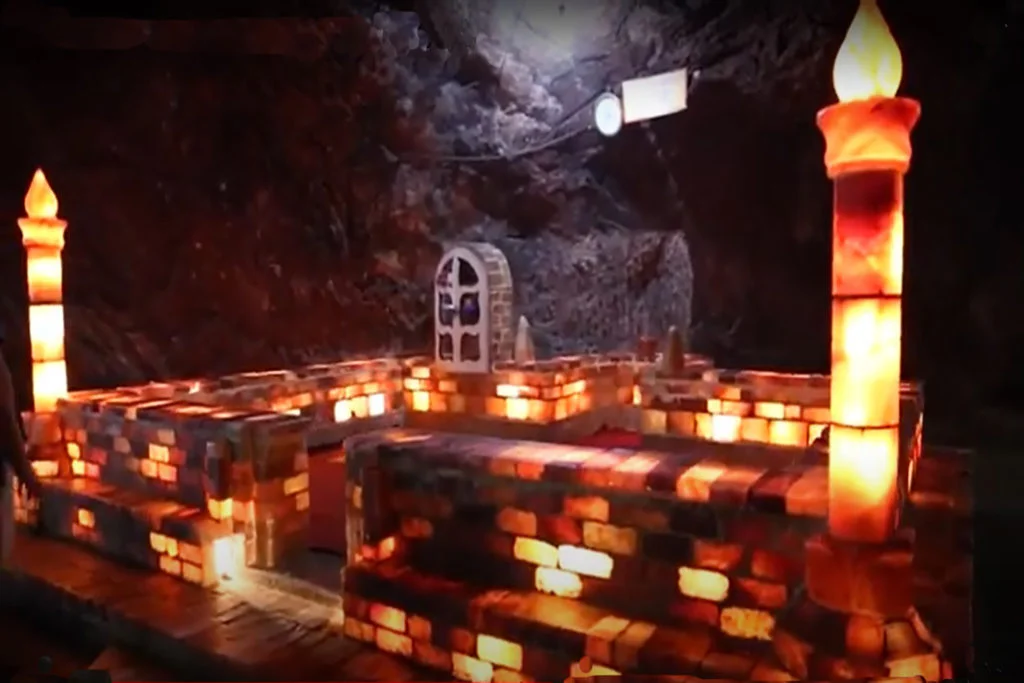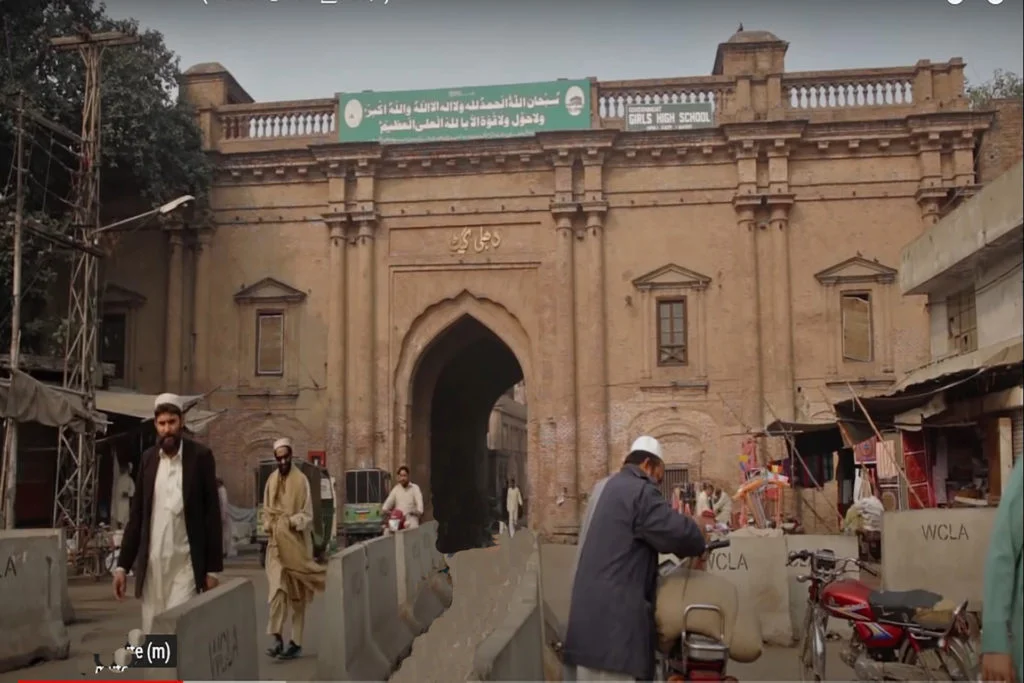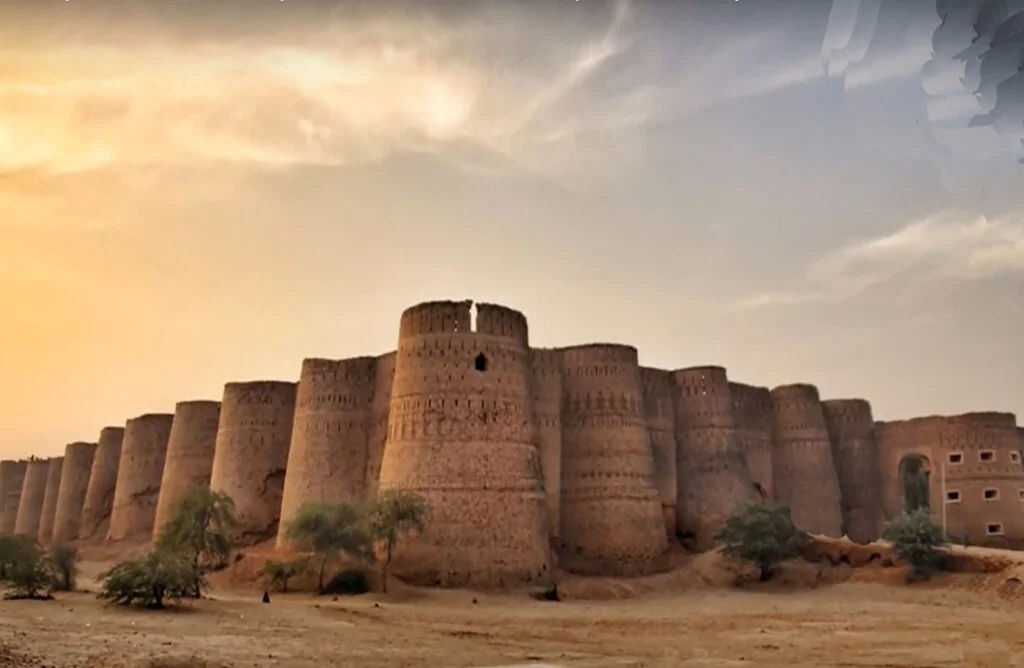Rohtas Fort, situated in the Punjab province of Pakistan near the town of Jhelum, is a 16th-century fortress of immense scale and grandeur. Notably, this fort has never been conquered and stands today remarkably well-preserved, making it one of the most substantial strongholds in the subcontinent.
Who Built Rohtas Fort Jhelum?
Raja Todar Mal, acting on the orders of Sher Shah Suri, oversaw the construction of Rohtas Fort. Following his victory over the Mughal Emperor Humayun in 1541, Sher Shah Suri recognized the strategic significance of Rohtas and commissioned the construction of a formidable stronghold in the northern region of what is now Pakistan. This fort, known as Rohtas Fort or Qila Rohtas, has a remarkable history of never falling to external forces, standing resolute through the ages.
The primary defensive structure comprises colossal walls that extend for over 4 kilometers, fortified with numerous bastions and adorned with grand gates. Rohtas Fort also referred to as Qila Rohtas stands as an exceptional testament to early Muslim military architecture in Central and South Asia.
Renowned for its massive defensive walls and the grandeur of its gates, Rohtas Fort earned UNESCO World Heritage Site status in 1997. It is celebrated as an outstanding exemplar of Muslim military architecture in Central and South Asia, signifying its historical and architectural significance on the global stage.
Rohtas Fort History
Rohtas Fort in Jhelum, Pakistan, is a remarkable exemplar of early Muslim military architecture in Central and South Asia. Constructed in the 16th century at a strategically significant location in the Punjab province, this 70-hectare fortress features a primary fortification defined by massive brick walls encompassing a perimeter of more than four kilometers. These walls are adorned with 68 bastions and punctuated by 12 grand gates thoughtfully positioned for strategic advantage.
Rohtas Fort’s architectural and artistic heritage is a harmonious blend of influences from across the Islamic world, and its design had a profound impact on the evolution of architectural style within the Mughal Empire.
The fort’s construction, initiated by Sher Shah Suri, founder of the Suri dynasty, began in 1541. It boasts an irregular layout that adheres to the natural contours of its hilltop location. An inner wall separates the inner citadel from the rest of the fort, and the fort’s garrison enjoyed self-sufficiency in water supply through the presence of Baolis (stepped wells). Notable features within the fort include the Shahi Masjid, a splendid mosque near the Kabuli Gate, and the Haveli (Palatial House) of Man Singh, added during the Mughal era.
Rohtas Fort Jhelum stands as a pioneering example of fortification, drawing inspiration from Turkish military architecture adapted to counter the challenges posed by gunpowder and cannons. This transformation resulted in a distinct and enduring architectural style that continues to captivate visitors and enthusiasts of history and military engineering.
Rohtas Fort Jhelum Gates
Rohtas Fort Jhelum has twelve gates, all built of ashlar.
1. Sohail
2. Shah Chandwali
3. Kabuli
4. Shishi
5. Langar Khani
6. Talaqi
7. Mori or Kashmiri
8. Khwas Khani
9. Gatali
10. Tulla Mori
11. Pippli
12. Sar
Rohtas Fort Jhelum Location
Rohtas Fort is situated approximately eight kilometers to the south of the Grand Trunk (G.T.) Road. It is positioned at a distance of around 16 kilometers northwest of Jhelum and is in proximity to Dina town. The fort is situated about 3 kilometers from Khukha. Notably, the historic Shahrah-e-Azam road once followed the outer northern wall of the fort, adding to the historical significance of its location.
Rohtas Fort Height & Area
Rohtas Fort in Jhelum was strategically constructed atop a hill, offering commanding views of a gorge where the Kahan River meets a seasonal stream known as Parnal Khas. This hill fort stands at an elevation of approximately 300 feet (91 meters) above its immediate surroundings. It is positioned at an impressive height of 2,660 feet (810 meters) above sea level and encompasses an expansive area spanning 70 hectares. This unique vantage point and elevated location added to the fort’s military advantage and significance.
Qila Rohtas Architecture & Design
Rohtas Fort in Jhelum is a remarkable architectural fusion, blending influences from Turkey and the Subcontinent, which later became a model for Mughal architecture and its subsequent adaptations, including European colonial architecture. Notably, the fort’s decorative elements are marked by their sophistication and high artistic value. These include intricate high and low-relief carvings, calligraphic inscriptions in marble and sandstone, plaster decoration, and glazed tiles.
The garrison complex within Rohtas Fort was continually in use until 1707 and was later reoccupied during the Durrani and Sikh rule in the 18th and 19th centuries. Over time, a village grew within the fort’s walls.
Rohtas Fort is a unique treasure, as there are no surviving examples of military architecture from this period on the same grand scale and level of completeness and preservation in the subcontinent.
The fort’s components collectively express its exceptional universal value. These include its massive defensive walls, monumental gates, semi-circular bastions irregularly spaced along the walls, the transverse wall that defines the inner citadel, Baolis (step wells), Haveli Man Singh, and the Shahi Masjid. Most of these elements remain in a reasonable state of preservation, although there are areas where the castle wall has collapsed, and the monument faces the threat of erosion, which has disrupted its original drainage system.
Rohtas Fort is legally protected under the Antiquities Act of 1975, as passed by the Parliament of the Islamic Republic of Pakistan. The 18th Amendment Act of 2010 granted full administrative and financial authority over all monuments in the Punjab province to the Government of Punjab. The Directorate General of Archaeology and Museums, Government of Punjab, is entrusted with the responsibility for managing and protecting Rohtas Fort.
The land inside the fortifications, occupied by the modern village, is owned by the government and managed by the General Directorate of Archaeology and Museums. Stringent controls are in place to regulate any construction or redevelopment within and around the village, with an inner buffer zone to ensure the fort’s protection. This buffer zone around the fort’s perimeter wall ranges from 750 meters to 1500 meters in width, further safeguarding the environment and the monument’s integrity.
The Rohtas Fort Conservation Program, initiated in 2000 by the Department of Archaeology and Museums and the Himalayan Wildlife Foundation, aims to preserve the fort and develop it as a heritage site adhering to international conservation and tourism standards. Oversight for conservation and development work is provided by a steering committee formed in 2003.
Conservation & Protection of Rohtas Fort
Sustaining the exceptional universal value of the Rohtas Fort property necessitates a series of actions aimed at enhancing its management, protection, and presentation. A primary focus should be directed toward addressing the fort’s drainage system and undertaking necessary interventions. These measures are vital to ensure the fort’s long-term preservation.
To meet international conservation standards and uphold the property’s significance, the following actions are recommended:
- Completion and Approval of the Master Conservation Plan: The master conservation plan, established as part of the Rohtas Fort Conservation Program, should be finalized and officially approved. This plan will serve as a comprehensive blueprint for the preservation and enhancement of the fort.
- Full Implementation of the Master Conservation Plan: It is crucial that the approved master conservation plan is fully and rigorously implemented. This includes executing conservation measures, restoring structures, and addressing drainage issues.
- Introduction of a Regular Monitoring Regime: To keep a close watch on the fort’s condition and the effectiveness of conservation efforts, a systematic and regular monitoring regime should be established. This will enable prompt responses to any emerging issues or threats.
- Strengthening Management and Protection: Enhancing the overall management and protection of the property is essential. This involves enforcing strict controls over construction and redevelopment in the fort’s vicinity, ensuring that the inner buffer zone is safeguarded, and improving the drainage system to mitigate erosion risks.
By taking these measures, Rohtas Fort can continue to stand as a testament to its exceptional universal value, representing an important historical and architectural gem for future generations to appreciate and admire.

